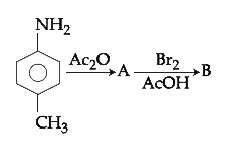The reaction sequence(s) that would lead to o-xylene as the major product is(are)
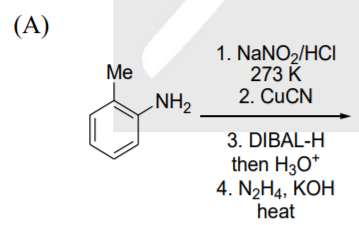

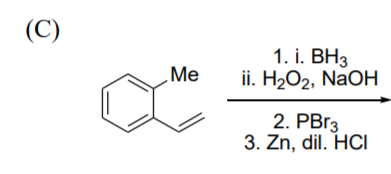
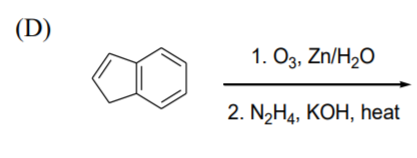
To determine the reaction sequences that lead to o-xylene as the major product, we will analyze the provided options step by step.
Step 1: Understand the structure of o-xylene
o-Xylene is a dimethylbenzene with two methyl groups attached to adjacent carbon atoms on the benzene ring. The structure can be represented as follows:
CH3|C6H4|CH3
Step 2: Analyze Option A
1. Starting Material: A benzene ring with an amino group (NH2) and a methyl group (CH3).
2. Reagents: NaNO2, HCl, and 273 K.
- This leads to the formation of a diazonium salt.
- The diazonium salt formed will be:
Me−N2+Cl−
3. Next Step: Reaction with CuCN.
- The diazonium salt reacts with copper cyanide (CuCN) to replace the diazonium group with a cyanide group (CN).
- The product will be:
Me−CN
4. Hydrolysis: Using H3O+ and Diabol-H.
- The cyanide undergoes hydrolysis to form an aldehyde (CHO).
5. Wolf-Kishner Reduction:
- The aldehyde is then reduced to a methyl group using N2H4, KOH, and heat.
- Final product: o-Xylene.
Step 3: Analyze Option B
1. Starting Material: A benzene ring with a bromine atom (Br) and a methyl group (CH3).
2. Reagents: Mg, CO2, and water.
- The bromine is replaced by a Grignard reagent (Me-MgBr).
3. Next Step: Reaction with CO2.
- The Grignard reagent reacts with CO2 to form a carboxylic acid.
4. Conversion to Acid Chloride:
- The carboxylic acid is converted to an acid chloride using SOCl2.
5. Reduction:
- The acid chloride is reduced to an aldehyde using H2, Pd, and BaSO4 (Rosenmund reduction).
6. Final Reduction:
- The aldehyde is then reduced to o-xylene using Zn, Hg, and HCl (Clemmensen reduction).
Step 4: Analyze Option C
1. Starting Material: A benzene ring with a methyl group (Me).
2. Reagents: B(SO3) and H2O2 in NaOH.
- This leads to the formation of a phenol.
3. Conversion to Alkyl Halide:
- The phenol is converted to an alkyl halide using PBr3.
4. Reduction:
- The alkyl halide is reduced to an ethyl group using Zn and dilute HCl.
- This does not lead to o-xylene as it introduces an ethyl group instead of a second methyl group.
Step 5: Analyze Option D
1. Starting Material: A benzene ring with a double bond.
2. Reagents: O3 and Zn/H2O.
- This leads to ozonolysis, producing carbonyl compounds.
3. Wolf-Kishner Reduction:
- The carbonyl compounds are reduced to hydrocarbons.
- The final product does not yield o-xylene but rather a mixture of products.
Conclusion
The correct options that lead to o-xylene as the major product are Option A and Option B.
o-Xylene is a dimethylbenzene with two methyl groups attached to adjacent carbon atoms on the benzene ring. The structure can be represented as follows:
1. Starting Material: A benzene ring with an amino group (NH2) and a methyl group (CH3).
2. Reagents: NaNO2, HCl, and 273 K.
- This leads to the formation of a diazonium salt.
- The diazonium salt formed will be:
Me−N2+Cl−
3. Next Step: Reaction with CuCN.
- The diazonium salt reacts with copper cyanide (CuCN) to replace the diazonium group with a cyanide group (CN).
- The product will be:
Me−CN
4. Hydrolysis: Using H3O+ and Diabol-H.
- The cyanide undergoes hydrolysis to form an aldehyde (CHO).
5. Wolf-Kishner Reduction:
- The aldehyde is then reduced to a methyl group using N2H4, KOH, and heat.
- Final product: o-Xylene.
1. Starting Material: A benzene ring with a bromine atom (Br) and a methyl group (CH3).
2. Reagents: Mg, CO2, and water.
- The bromine is replaced by a Grignard reagent (Me-MgBr).
3. Next Step: Reaction with CO2.
- The Grignard reagent reacts with CO2 to form a carboxylic acid.
4. Conversion to Acid Chloride:
- The carboxylic acid is converted to an acid chloride using SOCl2.
5. Reduction:
- The acid chloride is reduced to an aldehyde using H2, Pd, and BaSO4 (Rosenmund reduction).
6. Final Reduction:
- The aldehyde is then reduced to o-xylene using Zn, Hg, and HCl (Clemmensen reduction).
1. Starting Material: A benzene ring with a methyl group (Me).
2. Reagents: B(SO3) and H2O2 in NaOH.
- This leads to the formation of a phenol.
3. Conversion to Alkyl Halide:
- The phenol is converted to an alkyl halide using PBr3.
4. Reduction:
- The alkyl halide is reduced to an ethyl group using Zn and dilute HCl.
- This does not lead to o-xylene as it introduces an ethyl group instead of a second methyl group.
1. Starting Material: A benzene ring with a double bond.
2. Reagents: O3 and Zn/H2O.
- This leads to ozonolysis, producing carbonyl compounds.
3. Wolf-Kishner Reduction:
- The carbonyl compounds are reduced to hydrocarbons.
- The final product does not yield o-xylene but rather a mixture of products.
The correct options that lead to o-xylene as the major product are Option A and Option B.
Topper's Solved these Questions
Similar Questions
Knowledge Check
Which of the following reactions would give isopropyl benzene as the major product ?
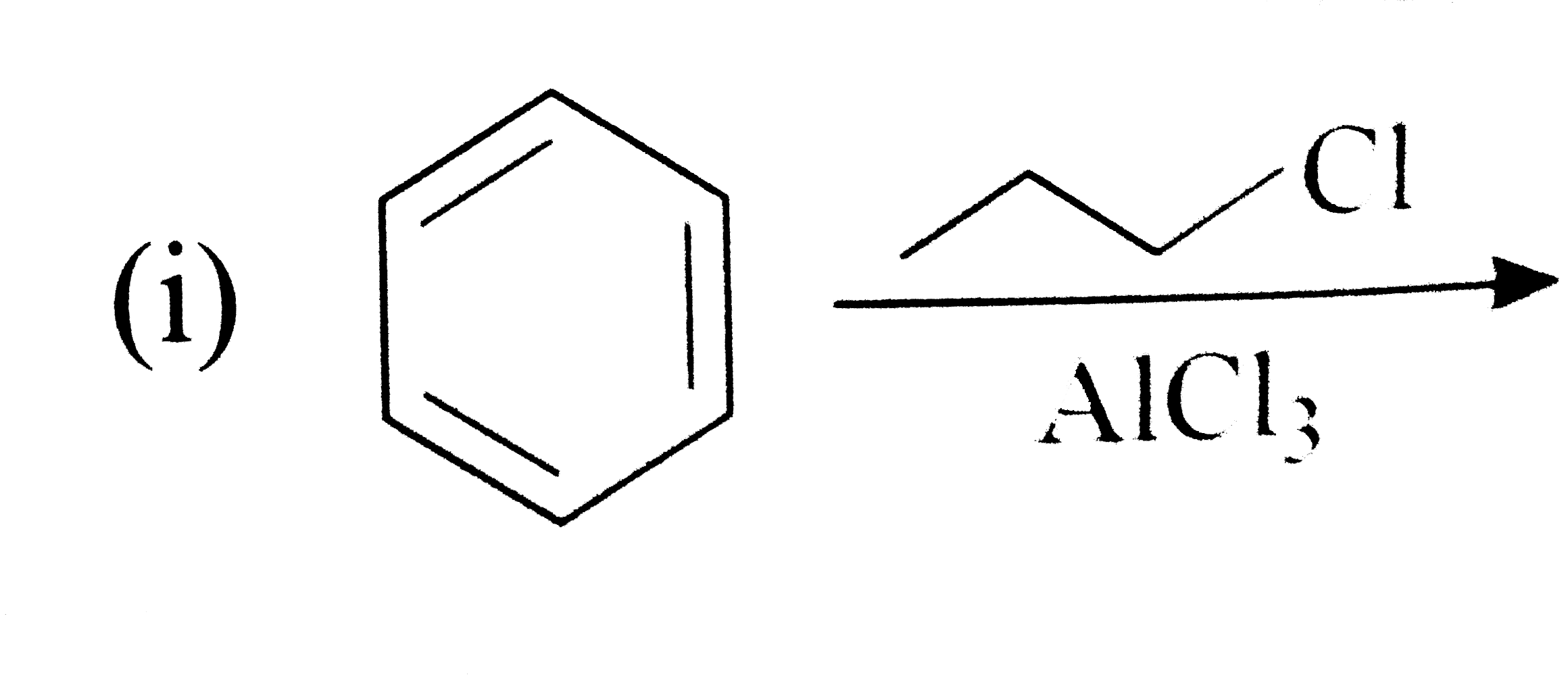


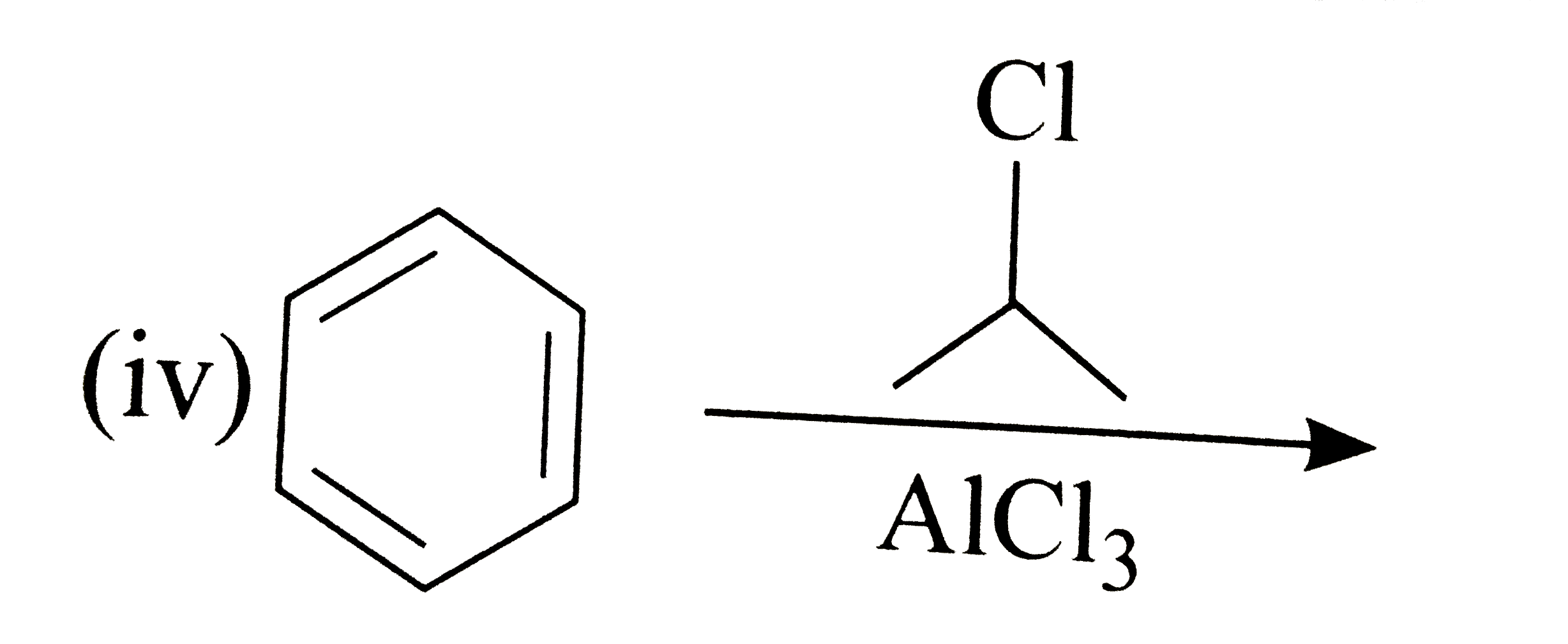 AI and iv onlyBii and iii onlyCii iii iv onlyDd all of these
AI and iv onlyBii and iii onlyCii iii iv onlyDd all of theseIn the following reaction sequence the major product B is
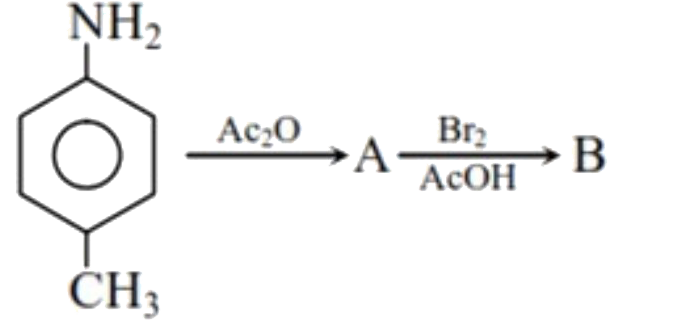 A
A B
B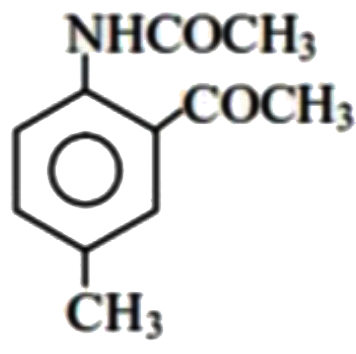 C
C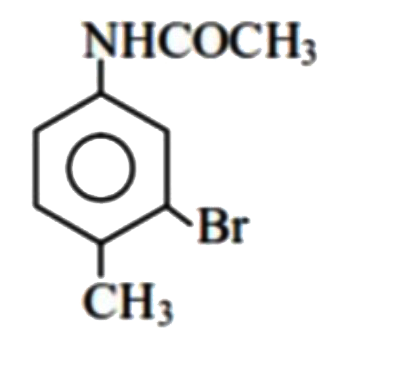 D
D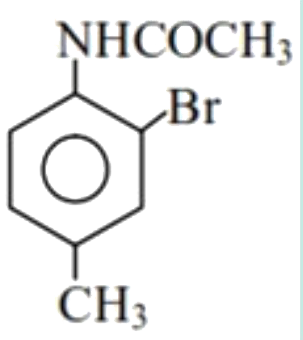

In the reaction the major product (s) formed is (are) ,APropyneBCyclohexaneC3-CyclohexylpropyneD2-Cyclohexylpropane
What would be the major product of the given reaction ?

View SolutionWhat would be the major product of the given reaction ?

View SolutionIn the reaction shown below, the major product(s) formed is/are .
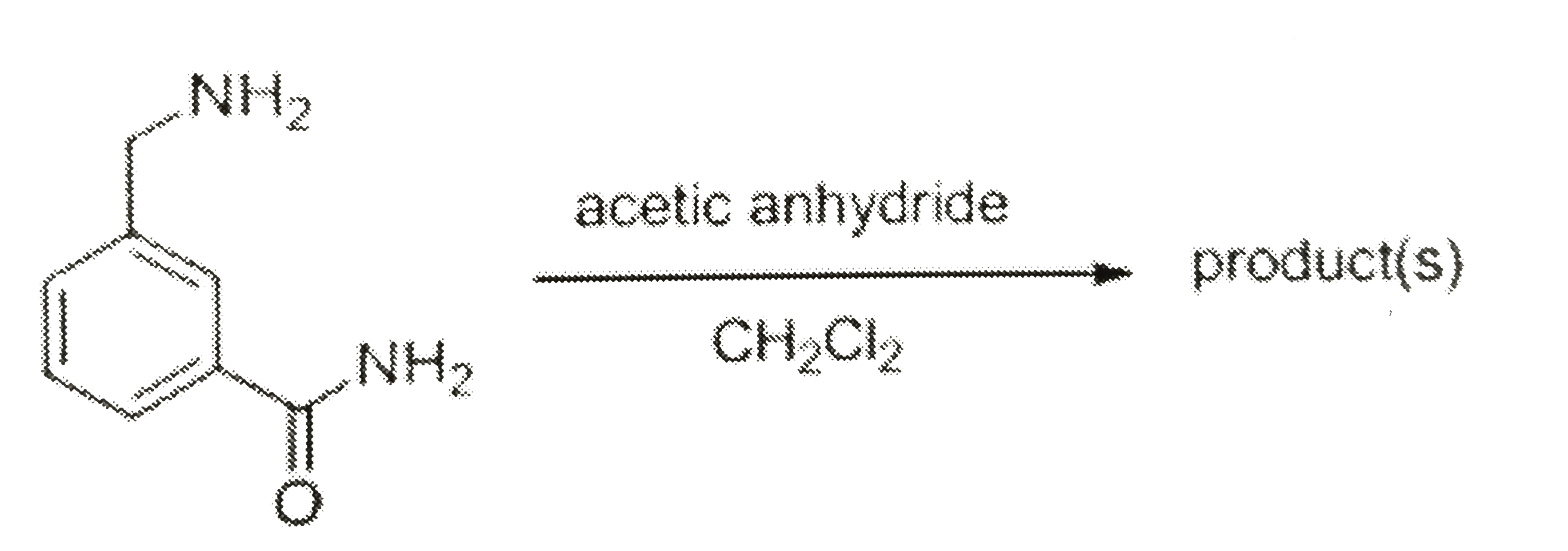
View SolutionWhat would be the major product of following reaction ?

View SolutionConsider the following sequence of reactions

The major product (B) is
View Solution

